Bolivia, Brazil, Ecuador and Peru
Item set
- Título / Título / Título
- Bolivia, Brazil, Ecuador and Peru
Items
-
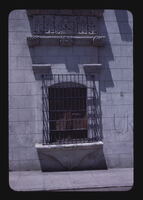 Casa del Moral - detail La Casa del Moral; detail: window with carved wooden shutters and iron grillwork.
Casa del Moral - detail La Casa del Moral; detail: window with carved wooden shutters and iron grillwork. -
 Casa del Moral - detail La Casa del Moral; detail: stone carving above the doorway with family crest incorporated into the design. Rain spouts on either side are decorated with animal faces.
Casa del Moral - detail La Casa del Moral; detail: stone carving above the doorway with family crest incorporated into the design. Rain spouts on either side are decorated with animal faces. -
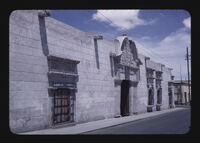 Casa del Moral Casa del Moral, 17th century, general view. Facade with very fine colonial Plateresque architecture.
Casa del Moral Casa del Moral, 17th century, general view. Facade with very fine colonial Plateresque architecture. -
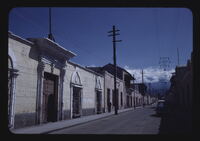 Typical Single-Story Colonial House Typical single story colonial house, 18th Century, with stone carved door frame and decorations.
Typical Single-Story Colonial House Typical single story colonial house, 18th Century, with stone carved door frame and decorations. -
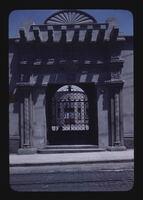 House on Calle Sucre Modern house in the Colonial Style. House of Rey de Castro, on Calle Sucre.
House on Calle Sucre Modern house in the Colonial Style. House of Rey de Castro, on Calle Sucre. -
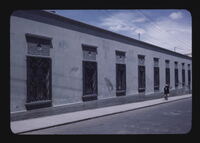 Cement Resurfacing An example of cement resurfacing common in Arequipa today.
Cement Resurfacing An example of cement resurfacing common in Arequipa today. -
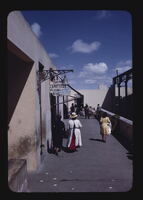 Small Shopping Area, downtown Small shopping section in downtown Arequipa
Small Shopping Area, downtown Small shopping section in downtown Arequipa -
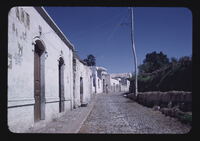 Street Scene Street scene, old and new architecture. Because of earthquakes, it becomes necessary to reconstruct and restore. The facades and interior walls are frequently resurfaced, over original colonial construction.
Street Scene Street scene, old and new architecture. Because of earthquakes, it becomes necessary to reconstruct and restore. The facades and interior walls are frequently resurfaced, over original colonial construction. -
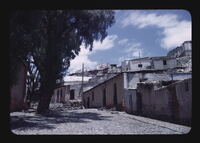 Old Houses of Arequipa Old houses of Arequipa, now lived in by the poor of that city. Note the steps leading to entrances.
Old Houses of Arequipa Old houses of Arequipa, now lived in by the poor of that city. Note the steps leading to entrances. -
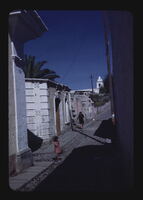 An Old Street on the Outskirts of Arequipa An old street on the outskirts of Arequipa, with restored buildings in the foreground.
An Old Street on the Outskirts of Arequipa An old street on the outskirts of Arequipa, with restored buildings in the foreground. -
 A Very Old Street A very old street with stone houses, whose walls are of colonial construction. The heavy construction is necessitated by frequent earthquakes.
A Very Old Street A very old street with stone houses, whose walls are of colonial construction. The heavy construction is necessitated by frequent earthquakes. -
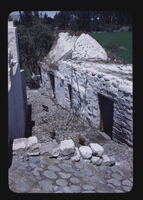 Street Cut through a Hill of Stone Street cut through a hill of stone. These very old houses were excavated like caves, from the hillside, and may still be seen in some outlying sections of the city.
Street Cut through a Hill of Stone Street cut through a hill of stone. These very old houses were excavated like caves, from the hillside, and may still be seen in some outlying sections of the city. -
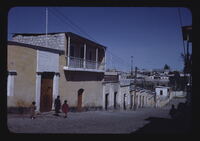 Colonial Style Architecture, Arequipa Typical street with colonial style architecture. This building was probably redone in the 19th century. The band of dark color at the base is painted with a solution similar to asphalt, which is believed to decrease the moisture in the walls.
Colonial Style Architecture, Arequipa Typical street with colonial style architecture. This building was probably redone in the 19th century. The band of dark color at the base is painted with a solution similar to asphalt, which is believed to decrease the moisture in the walls. -
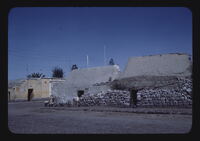 Old Section of Arequipa Old section of Arequipa with cobblestone streets, and houses made of stucco, rocks, and wood.
Old Section of Arequipa Old section of Arequipa with cobblestone streets, and houses made of stucco, rocks, and wood. -
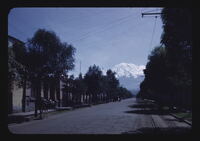 Twentieth Century Street, Arequipa New street, named "Twentieth Century," in residential section, with a donkey (cans on back), used to deliver milk.
Twentieth Century Street, Arequipa New street, named "Twentieth Century," in residential section, with a donkey (cans on back), used to deliver milk. -
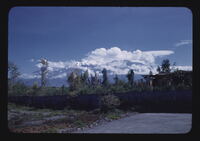 Landscape near Arequipa Typical landscape of this city with rich growth of flowers and trees, and ever present snow-capped mountains (Chachani).
Landscape near Arequipa Typical landscape of this city with rich growth of flowers and trees, and ever present snow-capped mountains (Chachani). -
 Residential Neighborhood in Arequipa A new landscaped boulevard in the residential section. The snow-capped mountain Chachani rises above the white clouds in the background.
Residential Neighborhood in Arequipa A new landscaped boulevard in the residential section. The snow-capped mountain Chachani rises above the white clouds in the background. -
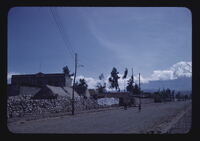 Street Scene, Outskirts of Arequipa Street scene in the outskirts of the city, with the snow-capped volcano, Misti, in the background
Street Scene, Outskirts of Arequipa Street scene in the outskirts of the city, with the snow-capped volcano, Misti, in the background -
 A young Alpaca A young Alpaca, used as a pet, but actually one of the major sources of wool for Indian clothing
A young Alpaca A young Alpaca, used as a pet, but actually one of the major sources of wool for Indian clothing -
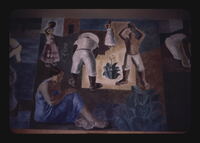 Ministerio da Educacao e Saude (Ministry of Education and Health) - Interior: office Public Buildings - Rio de Janeiro Ministerio da Educacao e Saude (Ministry of Education and Health) Interior: office of the Director Mural in fresco by Candido Portinari
Ministerio da Educacao e Saude (Ministry of Education and Health) - Interior: office Public Buildings - Rio de Janeiro Ministerio da Educacao e Saude (Ministry of Education and Health) Interior: office of the Director Mural in fresco by Candido Portinari -
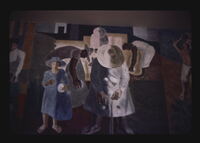 Ministerio da Educacao e Saude (Ministry of Education and Health) - Interior: office Public Buildings - Rio de Janeiro Ministerio da Educacao e Saude (Ministry of Education and Health) Interior: office of the Director Mural in fresco by Candido Portinari
Ministerio da Educacao e Saude (Ministry of Education and Health) - Interior: office Public Buildings - Rio de Janeiro Ministerio da Educacao e Saude (Ministry of Education and Health) Interior: office of the Director Mural in fresco by Candido Portinari -
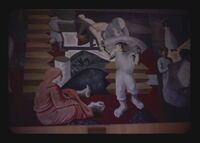 Ministerio da Educacao e Saude (Ministry of Education and Health) - Interior: office Public Buildings - Rio de Janeiro Ministerio da Educacao e Saude (Ministry of Education and Health) Interior: office of the Director Mural in fresco by Candido Portinari
Ministerio da Educacao e Saude (Ministry of Education and Health) - Interior: office Public Buildings - Rio de Janeiro Ministerio da Educacao e Saude (Ministry of Education and Health) Interior: office of the Director Mural in fresco by Candido Portinari -
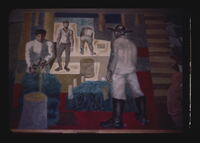 Ministerio da Educacao e Saude (Ministry of Education and Health) - Interior: office Public Buildings - Rio de Janeiro Ministerio da Educacao e Saude (Ministry of Education and Health) Interior: office of the Director Mural in fresco by Candido Portinari
Ministerio da Educacao e Saude (Ministry of Education and Health) - Interior: office Public Buildings - Rio de Janeiro Ministerio da Educacao e Saude (Ministry of Education and Health) Interior: office of the Director Mural in fresco by Candido Portinari -
 Ministerio da Educacao e Saude (Ministry of Education and Health) - Interior: office Public Buildings - Rio de Janeiro Ministerio da Educacao e Saude (Ministry of Education and Health) Interior: office of the Director Mural in fresco by Candido Portinari
Ministerio da Educacao e Saude (Ministry of Education and Health) - Interior: office Public Buildings - Rio de Janeiro Ministerio da Educacao e Saude (Ministry of Education and Health) Interior: office of the Director Mural in fresco by Candido Portinari -
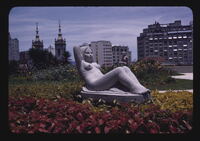 Ministerio da Educacao e Saude (Ministry of Education and Health) - Garden on roof of exhibition wing: Sculpture Public Buildings - Rio de Janeiro Ministerio da Educacao e Saude (Ministry of Education and Health) Garden on roof of exhibition wing Sculpture: reclining female, by Celso Antonio
Ministerio da Educacao e Saude (Ministry of Education and Health) - Garden on roof of exhibition wing: Sculpture Public Buildings - Rio de Janeiro Ministerio da Educacao e Saude (Ministry of Education and Health) Garden on roof of exhibition wing Sculpture: reclining female, by Celso Antonio -
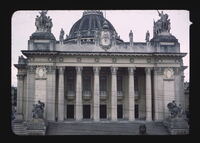 Tiradentes Palace - Main facade Public Buildings - Rio de Janeiro Tiradentes Palace Main facade
Tiradentes Palace - Main facade Public Buildings - Rio de Janeiro Tiradentes Palace Main facade -
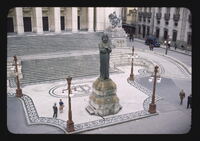 Tiradentes Palace - General view from above of statue of Tiradentes Public Buildings - Rio de Janeiro Tiradentes Palace General view from above of statue of Tiradentes (The Tooth-puller) , Joaquim José da Silva Xavier. He is famed as the first martyr to the cause of Brazilian freedom. The building was inaugurated in 1926 and serves as the Chamber of Deputies of Brazil. Architects: A. Memoria and F. Cuchet Made entirely of Brazilian materials contributed by the various states. The dome of the rotunda is of stained glass representing the sky and stars above Brazil on November 15, 1889 when the Republic was proclaimed.
Tiradentes Palace - General view from above of statue of Tiradentes Public Buildings - Rio de Janeiro Tiradentes Palace General view from above of statue of Tiradentes (The Tooth-puller) , Joaquim José da Silva Xavier. He is famed as the first martyr to the cause of Brazilian freedom. The building was inaugurated in 1926 and serves as the Chamber of Deputies of Brazil. Architects: A. Memoria and F. Cuchet Made entirely of Brazilian materials contributed by the various states. The dome of the rotunda is of stained glass representing the sky and stars above Brazil on November 15, 1889 when the Republic was proclaimed. -
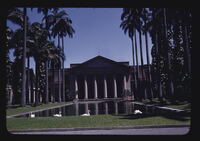 Itamarati Palace - Pavilion and pool Public Buildings - Rio de Janeiro Itamaraty Palace Pavilion and pool
Itamarati Palace - Pavilion and pool Public Buildings - Rio de Janeiro Itamaraty Palace Pavilion and pool -
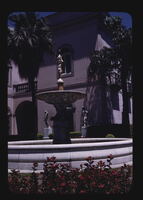 Itamarati Palace - Fountain in courtyard Public Buildings - Rio de Janeiro Itamaraty Palace Fountain in courtyard
Itamarati Palace - Fountain in courtyard Public Buildings - Rio de Janeiro Itamaraty Palace Fountain in courtyard -
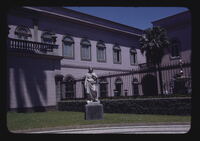 Itamarati Palace - Main entrance to grounds: detail Public Buildings - Rio de Janeiro Itamaraty Palace Main entrance to grounds: detail
Itamarati Palace - Main entrance to grounds: detail Public Buildings - Rio de Janeiro Itamaraty Palace Main entrance to grounds: detail -
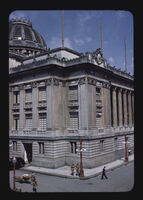 Municipal Opera House - Corner Public Buildings - Rio de Janeiro Municipal Opera House Corner
Municipal Opera House - Corner Public Buildings - Rio de Janeiro Municipal Opera House Corner -
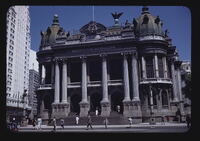 Municipal Opera House - Main facade Public Buildings - Rio de Janeiro Municipal Opera House Main facade
Municipal Opera House - Main facade Public Buildings - Rio de Janeiro Municipal Opera House Main facade -
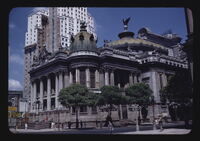 Municipal Opera House - General view Public Buildings - Rio de Janeiro Municipal Opera House General view
Municipal Opera House - General view Public Buildings - Rio de Janeiro Municipal Opera House General view -
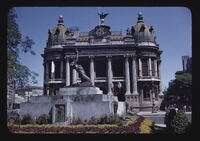 Municipal Opera House - General view, direct front Public Buildings - Rio de Janeiro Municipal Opera House General view, direct front
Municipal Opera House - General view, direct front Public Buildings - Rio de Janeiro Municipal Opera House General view, direct front -
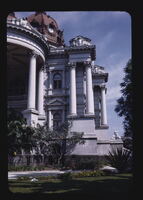 Monroe Palace - Loggia Columns: Left end of building Public Buildings - Rio de Janeiro Monroe Palace Loggia Columns Left end of building
Monroe Palace - Loggia Columns: Left end of building Public Buildings - Rio de Janeiro Monroe Palace Loggia Columns Left end of building -
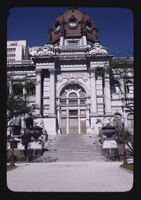 Monroe Palace - Main facade Central dome Stairway Entrance: Front view Public Buildings - Rio de Janeiro Monroe Palace Main facade Central dome Stairway Entrance Front view
Monroe Palace - Main facade Central dome Stairway Entrance: Front view Public Buildings - Rio de Janeiro Monroe Palace Main facade Central dome Stairway Entrance Front view -
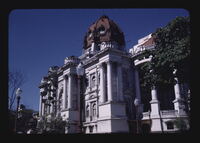 Monroe Palace - Main facade Central dome: Side view Public Buildings - Rio de Janeiro Monroe Palace Main facade Central dome Side view
Monroe Palace - Main facade Central dome: Side view Public Buildings - Rio de Janeiro Monroe Palace Main facade Central dome Side view -
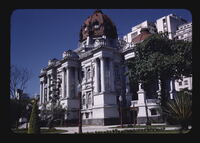 Monroe Palace - General view Public Buildings - Rio de Janeiro Monroe Palace General view from right This building was the Brazilian Pavilion at the Louisiana Purchase Exposition at St. Louis, Missouri in 1904. Designed by Brazil's Commissioner-General at the Exposition, Col. F. M. de Souza Aguiar. It is French renaissance style, with a rectangular body and two circular loggias at the two ends. At the close of the St. Louis Exposition, the building was dismantled and transferred to Rio de Janeiro. There it was reassembled and named in honor of President James Monroe and the Monroe Doctrine. Until 1937 it served as the Federal Senate, then became the headquarters of the Ministry of Justice and of the Interior.
Monroe Palace - General view Public Buildings - Rio de Janeiro Monroe Palace General view from right This building was the Brazilian Pavilion at the Louisiana Purchase Exposition at St. Louis, Missouri in 1904. Designed by Brazil's Commissioner-General at the Exposition, Col. F. M. de Souza Aguiar. It is French renaissance style, with a rectangular body and two circular loggias at the two ends. At the close of the St. Louis Exposition, the building was dismantled and transferred to Rio de Janeiro. There it was reassembled and named in honor of President James Monroe and the Monroe Doctrine. Until 1937 it served as the Federal Senate, then became the headquarters of the Ministry of Justice and of the Interior. -
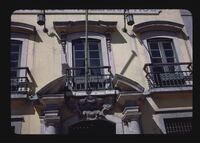 Departamento dos Correios e Telégrafos (Post Office and Telegraph Department Building) - Main facade: Detail Public Buildings - Rio de Janeiro Departamento dos Correios e Telégrafos (Post Office and Telegraph Department Building) Main facade Detail: decorative treatment above doorway Windows and balconies of second floor
Departamento dos Correios e Telégrafos (Post Office and Telegraph Department Building) - Main facade: Detail Public Buildings - Rio de Janeiro Departamento dos Correios e Telégrafos (Post Office and Telegraph Department Building) Main facade Detail: decorative treatment above doorway Windows and balconies of second floor -
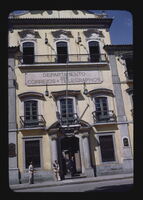 Departamento dos Correios e Telégrafos (Post Office and Telegraph Department Building) - Main facade Public Buildings - Rio de Janeiro Departamento dos Correios e Telégrafos (Post Office and Telegraph Department Building) Main facade, central section
Departamento dos Correios e Telégrafos (Post Office and Telegraph Department Building) - Main facade Public Buildings - Rio de Janeiro Departamento dos Correios e Telégrafos (Post Office and Telegraph Department Building) Main facade, central section